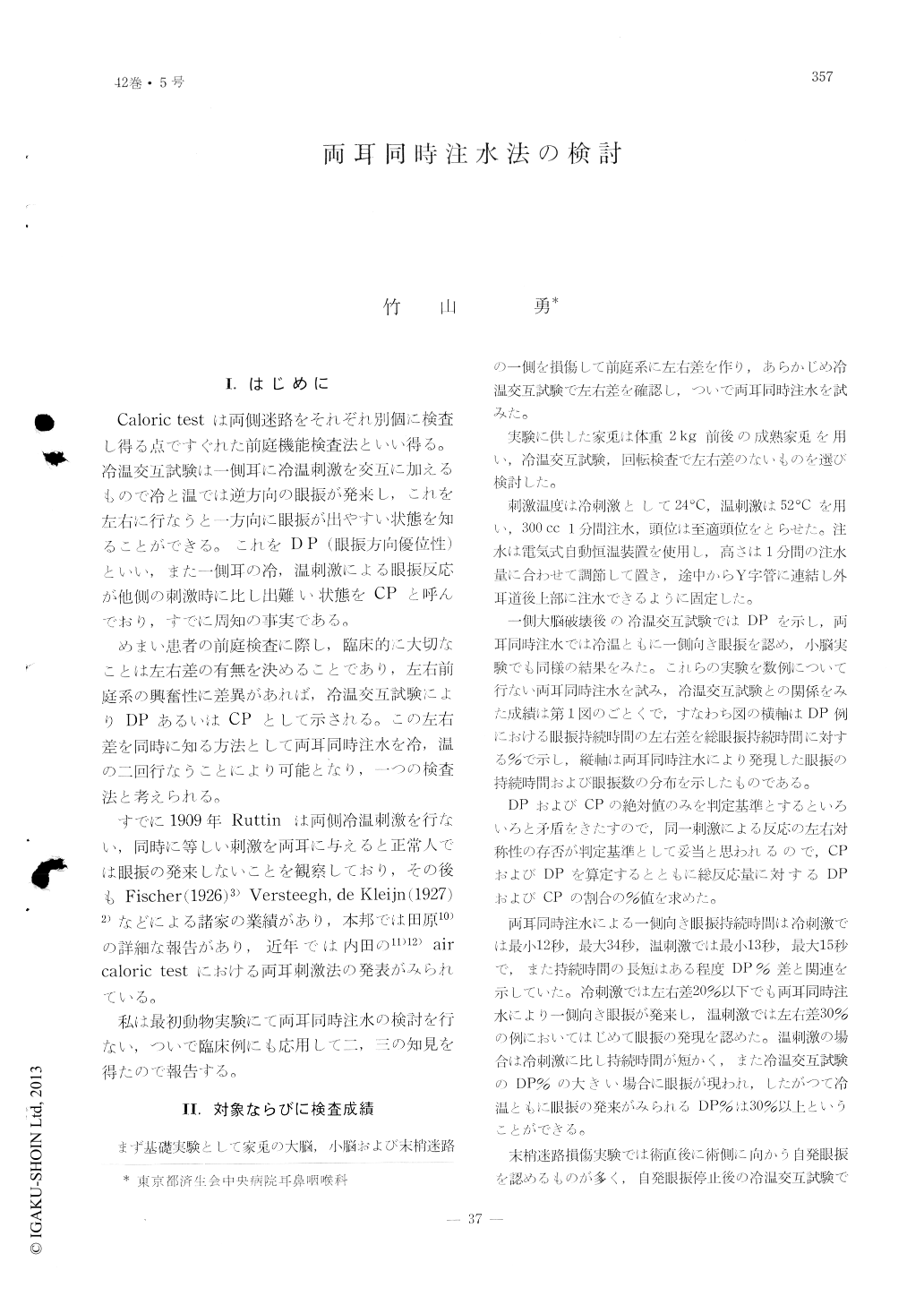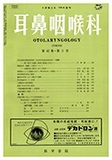Japanese
English
- 有料閲覧
- Abstract 文献概要
- 1ページ目 Look Inside
I.はじめに
Caloric testは両側迷路をそれぞれ別個に検査し得る点ですぐれた前庭機能検査法といい得る。冷温交互試験は一側耳に冷温刺激を交互に加えるもので冷と温では逆方向の眼振が発来し,これを左右に行なうと一方向に眼振が出やすい状態を知ることができる。これをDP(眼振方向優位性)といい,また一側耳の冷,温刺激による眼振反応が他側の刺激時に比し出難い状態をCPと呼んでおり,すでに周知の事実である。
めまい患者の前庭検査に際し,臨床的に大切なことは左右差の有無を決めることであり,左右前庭系の興奮性に差異があれば,冷温交互試験によりDPあるいはCPとして示される。この左右差を同時に知る方法として両耳同時注水を冷,温の二回行なうことにより可能となり,一つの検査法と考えられる。
The most important factor in making a caloric test is to determine the difference in reaction by stimulation of the left and right ear. The DP and CP are determined by use of alternate cold and warm water.
In order to simplify this procedure the author employs a method in which instillation of the cold followed by warm water is carried out in both ears simultaneously. The difference in reaction of the two sides is thus, easily noted. With this test if the difference in either ear ranges from 20% to 30%, the bilateral test will produce nystagmus.
Depending upon the nystagmus elicite by cold or warm water stimulation, if the direction of the nystagmus is towards the same side, it may considered as DP while if this direction is opposite it may be considered as CP. The test is highly simplified by resorting to only two instillation consisting of cold and warm water.

Copyright © 1970, Igaku-Shoin Ltd. All rights reserved.


